 The Mohawk Warriors played a key role in terrorizing Caledonia:
The Mohawk Warriors played a key role in terrorizing Caledonia:
In the discovery for the Brown/Chatwell lawsuit, Superintendent John Cain, the OPP’s major incident commander in overall charge of DCE from March, testified that this information [presence of “extreme activists” on Douglas Creek Estates occupation site] came from [Superintendent Ron] George in early April [2006]. Cain also said that, in his view, “extreme activists” meant Mohawk Warriors, whom he described as being akin to Hells Angels in that the Warriors deploy themselves in a quasi-military manner and, as he succinctly put it, they “use guns, have guns.”
- Helpless, Christie Blatchford, 2010, p55
The officers said the OPP grew more concerned about the possibility of violence after the arrival of militant members of the Mohawk Warriors, a group described as “akin to the Hells Angels.” The Warriors were involved in organized crime and cigarette running and had a reputation for physical confrontation and access to guns, including assault rifles, court heard. “Their flag was raised higher than the Six Nations flag which is symbolic of who controls the site,” Insp. Haggith testified.
- National Post, Nov 13/09: Faith lost in OPP’s ability to protect Caledonia: testimony REPRINT
- see also: VoiceofCanada, Dec 22/09: Brown-Chatwell trial: crimes against democracy (see section 1 re Warriors)
- see also: VoiceofCanada feature: Caledonia Photos
 According to CBC, the Canadian Forces are going to provide a ‘heartfelt’ apology for listing the Warriors in a counter-insurgency manual in 2006:
According to CBC, the Canadian Forces are going to provide a ‘heartfelt’ apology for listing the Warriors in a counter-insurgency manual in 2006:
Military officials are still finalizing the wording of the apology to the society, which was included in the draft counter-insurgency manual. The apology is expected in January or February. A spokesman for the Canadian Forces has called the apology important, and said it will be heartfelt. “We want to make sure that it’s [the apology] delivered in a proper format with a proper amount of respect and from the proper level,” Maj. Martell Thompson told CBC News.
The draft document singled out the aboriginal militant group as an example of “radical native American organizations” that can be “viewed as insurgencies with specific and limited aims.” The mention angered many Mohawks who claimed they were being compared to international terror groups such as Hezbollah and the Taliban.
- CBC News, Dec 21/10: Mohawk Warriors to get military apology
- see also: Globe & Mail, Dec 22/10: Military to apologize for listing radical first-nation groups among terrorists
But, who are the Mohawk Warriors?
CALEDONIA PLAYERS: The mohawk warriors
1. Cozying up to friends of Hezbollah and Hamas
Within two weeks of the beginning of the occupation of the Douglas Creek Estates members of McMaster University’s Solidarity for Palestinian Human Rights were on the site. They were there on May 03, 2006 when the Niagara Palestinian Association raised the Palestinian flag along with the Six Nations and Mohawk Warriors flag (photo, right).
Jamila Ghaddar, a spokesperson for McMaster’s SPHR who was on the occupation site when the Palestinian flag was raised, was also a guest speaker at a Feb 22/08 Toronto protest organized by the Coalition Against Israeli Apartheid – a group that sent delegates to the 2007 Cairo Conference between March 29-April 01 to meet representatives of Hamas, Hezbollah and the Muslim Brotherhood.
- MostlyWater.org, May 03/06: Palestinian flag raised in support of Caledonia land claims dispute [PDF]
- Ottawa Citizen, May 08/07: Canadian antiwar activists sat down with terror groups [PDF]
- Toronto Observer, Feb 27/08: Protestors take Palestinian ‘spirit of resistance’ to the streets [PDF]
As you can see from the photo (below, right), the Warrior flag was carried beside the face of Hasran Nazrullah, leader of Hezbollah at an anti-Israel rally. Walking beside the Warrior/Hezbollah combination is Ali Mallah, VP of the Canadian Arab Federation – which once petitioned the Canadian government to remove Hamas and Hezbollah from its terrorist watch list:
 VoiceofCanada, May 31/10: CUPE extremists supporting Muslim extremists supporting Native extremists
VoiceofCanada, May 31/10: CUPE extremists supporting Muslim extremists supporting Native extremists- ‘Caledonia: No More Nightmares,’ Ottawa, March 22/11: Mark Vandermaas presentation [PDF, 36P; see 2-23, 2-24], [VIDEO PLAYLIST; Vandermaas video #2: ‘Caledonia: a National Security Issue’ (begins at 05:34) VIDEO, 14:50] (also includes extensive info re Warrior support by radical unionists, anarchists and anti-Israel groups)
2. From Dr. Whitney Lackenbauer’s paper, Carrying the Burden of Peace
[p13] During the 1970s and 1980s, the Warrior Society expanded into neighbouring Mohawk communities and engaged in the lucrative cigarette trade to generate revenues. “After hours sales of alcohol, high stakes bingo, and slot machines have operated in defiance of the efforts of both traditional and elected Mohawk governments,” one reporter observed.
[p13] In 1988, two hundred RCMP officers raided cigarette stores at Kahnawake, prompting Warriors to seize the Mercier Bridge for twenty-nine hours.
[p13-14] Rick Hornung describes in One Nation Under the Gun how factional conflicts over the control of gaming and the cigarette trade (and those residents who opposed both activities) led to heavy fighting with automatic weapons and even grenades. The small fifteen-member Akwesasne Mohawk Police Service was overwhelmed following the murder of two Mohawks at Akwesasne and significant property damage. The challenge of policing a diverse First Nation, which harboured “highly sophisticated and powerful organized criminal elements,” became starkly apparent. Order on the reserve was temporarily restored by sizable numbers of Ontario Provincial and RCMP police officers, supported with CF armoured vehicles, secure communications, and engineer services such as rafts and high-speed inflatable boats, and still the violence continued. In early 1990, a Canadian mechanized battalion moved to Cornwall in preparation for an aid to the civil power mission which was subsequently canceled.
 The Warriors did not enjoy the easy support of all Mohawks and their tactics and approach divided the community. “The anger on the reserve between those opposed to gambling, drug-running and smuggling, and those who feel the natives should be a law unto themselves, will not easily be overcome,” Captain Tony Keene noted in early 1990.30 The Warriors were fiercely opposed by other traditional Mohawks who followed the teachings of the Seneca prophet Handsome Lake. […]
The Warriors did not enjoy the easy support of all Mohawks and their tactics and approach divided the community. “The anger on the reserve between those opposed to gambling, drug-running and smuggling, and those who feel the natives should be a law unto themselves, will not easily be overcome,” Captain Tony Keene noted in early 1990.30 The Warriors were fiercely opposed by other traditional Mohawks who followed the teachings of the Seneca prophet Handsome Lake. […]
[p17, footnote 36] The Mohawk Warriors claimed publicly that the police fired first, and that Lemay had been a victim of fratricide (killed by a police bullet). Five years after the standoff, a coroner’s report concluded that the shot was fired by a Mohawk warrior, but the report did not identify the killer and no one was charged with Lemay’s murder.
[p20] LGen Kent R. Foster, the commander of the Mobile Force, concurred. “The Sûreté du Québec was not capable of facing the kind of weaponry in the Warriors’ arsenal,” he explained. “My view was that the army would eventually have to confront the natives. No police force in the country could be expected to deal with the circumstances that faced the Sûreté du Québec on July 11. […] This major internal security operation was officially described as “a brigade sized force in a confrontation with a well-armed dissident group whose potential military capabilities exceeded the capacity of civilian law enforcement agencies. […]
[p26] The Mohawk Warriors had impressive military capabilities that exceeded the capacity of civilian law enforcement agencies. A lawyer for the Kanesatake band council confirmed that many of the militant Warriors spearheading the Oka barricade were Vietnam veterans from the US side of the Akwesasne reserve. Their combat training and experience was reflected in the Mohawk positions: their barricades were well-sited and positioned to maximize cover and concealment, and they laid out an effective network of trenches and military obstacles. […]
 Furthermore, the Warriors established a sophisticated communications network between Akwasasne, Kanesatake and Kahnawake, making use of air raid sirens and fire hall bells, to hand-held radios, cellular telephones, local radio stations, and human patrols. They also possessed a large number of automatic weapons, supplemented by an array of hunting rifles, and had ample stockpiles of rations and ammunition. Overall, they were well organized and disciplined, with various calibre combat weapons “de très bonne qualité,” CWO Réginald Gagnon wrote.
Furthermore, the Warriors established a sophisticated communications network between Akwasasne, Kanesatake and Kahnawake, making use of air raid sirens and fire hall bells, to hand-held radios, cellular telephones, local radio stations, and human patrols. They also possessed a large number of automatic weapons, supplemented by an array of hunting rifles, and had ample stockpiles of rations and ammunition. Overall, they were well organized and disciplined, with various calibre combat weapons “de très bonne qualité,” CWO Réginald Gagnon wrote.
[32-33] On a deeper level, this situation reflected the Warriors’ overarching agenda, which could not accommodate any government or military interests without an explicit recognition of Mohawk sovereignty. Of course, the government could not concede on a point that could jeopardize the integrity of the entire Canadian state […]
[38] With momentum clearly working against them, the Warriors subjected the soldiers to a constant barrage of racial insults, particularly towards French Canadians.
- Journal of Military & Strategic Studies, Dr. Whitney Lackenbauer, 2008: Carrying the Burden of Peace: The Mohawks, the Canadian Forces and the Oka Crisis [PDF, 71p; VoC download PDF] (Dr. Lackenbauer is co-winner of the 2008 Donner Book Prize for Arctic Front – ‘best book on Canadian public policy’)
3. From former Ontario Minister of Aboriginal Affairs Michael Bryant’s Harvard Law School thesis
In his 1994 Harvard Law School thesis of May 1994 former Ontario Aboriginal Minister Michael Bryant – then a Master of Laws candidate – described the weaponry at OKA thusly:
Contributing to this extensive deployment was the Mohawk’s own fortifications. At the time of the July 11 S.Q. raid, the Mohawks had approximately 75 men armed with shotguns, high powered and semi-automatic pistols, a magnum revolver, assault and semi-automatic AK-47 rifles, a fully automatic machine gun, and several thousand rounds of ammunition. Over time, the Mohawk Warriors made more contributions to their arsenal, including a semi-automatic machine gun capable of firing 450-600 rounds per minute and of penetrating an APC. After a preliminary assessment of Mohawk fortifications and arms, the Army concluded that the Mohawks were “a highly organized paramilitary force.”
Although newspapers reported that Mohawks had as many as 6000 guns, the more plausible figure of 500-600 was reported by Geoffrey York’s text. Guns and ammunition continued to be smuggled in during the crisis, with a shipment of 80 AK-47s arriving in Kahnawake on the third or fourth week of the standoff. A number of decoys were also set, leading to television reports, for example, of a M72 rocket launcher. Similarly, it was never determined whether the wiring located on Mercier Bridge was actually an explosive or a hoax. A number of tank traps were set to halt APCs progress, and the bush in the Pines around Highway 138 was littered with lethal traps, resembling those the Vietnam veteran Warriors had perfected in that war. At its peak, as many as 500-600 Mohawks armed the fourteen bunkers and barricades surrounding the disputed territory.
- Legal Aspects of Chiapas, Oka & Wounded Knee conflicts: Intranational Armed Conflicts between Indigenous Peoples and States, Michael J. Bryant, LL.M Candidate, Harvard Law School, May 03/94. Table of Contents: [LINK]
- Bonafide researchers & journalists can contact Gary McHale for a copy of Mr. Bryant’s thesis.
4. More info about the Mohawk Warriors
If that isn’t enough, here’s more, including the role of the Mohawk Warriors in Ipperwash, and the support given them in Caledonia by radical unionists, anarchists and anti-Israel groups:
- Caledonia Victims Project feature: History of the Mohawk Warrior flag: a legacy of lawlessness
- VoiceofCanada, June 01/09: Mohawk Warriors: Canada allows organized crime to seize border crossing
- Peacemagazine.org: Roots of the Mohawk Crisis
- Mackenzie Institute, 1996: The Long Fall of the Mohawk Warriors PDF of original article in Gravitas, Summer 1996 by John Thompson: The Long Fall of the Mohawk Warriors
- Mackenzie Institute: The Ipperwash Protests – An Unfinished Drama
- Journal of Military and Strategic Studies: Carrying the Burden of Peace: The Mohawks, the Canadian Forces, and the Oka Crisis VoC DOWNLOAD
- Mackenzie Institute: Sin-Tax Failure, Ch. 6 – The Warriors Society and the Black Market
- RCMP Research & Evaluation Branch: Aboriginal Organized Crime in Canada
- CaledoniaWakeUpCall.com feature: Smuggling Through Aboriginal Reserves (numerous links to RCMP and media reports)
- U.S. House Committee on Homeland Security, April 2008: ‘Tobacco and Terror: How Cigarette Smuggling is Funding our Enemies Abroad’ PDF – CWUC DOWNLOAD
5. How the federal government funds native supremacist propaganda and a terror how-to guide
Unbelievable but true…
- VoiceofCanada, June 30/10: Feds gave native supremacist magazine $1.2M w/recommendation for more in 2010/2011
- Caledonia Victims Project, June 21/10: RedWire Magazine’s blueprint for terror & sabotage by native ‘revolutionaries’ paid for by federal funds?
UPDATES
- Celestial Junk, Dec 23/10: Cozy up to violently militant organizations
“I guess it’s the new CPC plan to attract Liberals.” - National Post editorial board, Dec 23/10: No apology for the Mohawk Warrior Society [PDF][…] It was Warrior Society members from the Kanesatake reserve south of Montreal who led the violent 78-day standoff at Oka, Que., in the summer of 1990. Masked and camouflaged Warriors shot and killed a Quebec provincial police officer, Marcel Lemay, in a dispute over the construction of a golf course and homes on land claimed by the Mohawks. The uniforms, language and militant postures they adopted were entirely in keeping with the conceit of an actual insurgency movement.In the spring of 2006, it was allegedly Warriors who incited violence when Mohawks from the Six Nations reserve occupied a residential subdivision under construction near Caledonia, Ont. in 2006. As Christie Blatchford documents in great detail in her new book, Helpless, these are not people who see themselves as bound by Canadian law.And just last summer on the Mohawk reserve at Akwesasne — west of Kanesatake — masked aboriginals claiming to be Warriors encircled a Canada Customs border crossing, which is situated on Akwesasne land. Nearly 200 band members built bonfires, banged drums and uttered threats to the border agents inside until the agents agreed to abandon their post. (Customs officers insist the Warriors were armed; they claim they were not.)The Warriors explain they are “just a militia,” not an insurgency. But what communities in Canada — including peaceful self-governing native bands — have the right to their own “militias?” This is Canada, not the Panjshir Valley.While the Kahnawake longhouse website carries a picture of its Warrior Society that looks more like a slow-pitch softball team than a group of armed rebels, they claim to be in charge of “national defence” of tribal lands. Following the outbreak of violence at Caledonia, the Kahnawake Warriors — officially dubbed the Rotisken’rakéhte or “duty of men to carry peace” — sent a message of solidarity to their Six Nations brothers and sisters demanding that the governments of Canada and Ontario cease “any further plans to invade our territories.”Our military may find value in building better relations with First Nations communities and people, but this apology — to be delivered early next year — will simply reinforce aboriginal leaders’ tendency to wallow in the politics of victimhood. It is politically correct wallpaper covering over the reality of continued aboriginal militancy.
- The Phantom Soapbox, Dec 26/10: Who’s to blame here, really though?
References
- CBC News, Dec 21/10: Mohawk Warriors to get military apology
- Globe & Mail, Dec 22/10: Military to apologize for listing radical first-nation groups among terrorists
- Helpless, Christie Blatchford, 2010, p55
- National Post, Nov 13/09: Faith lost in OPP’s ability to protect Caledonia: testimony REPRINT
- Western Standard, Dec 20/10: Julian and the Victims
- Caledonia Victims Project, Dec 20/10: Western Standard: “one victim Julian Fantino did not have the courage to meet
- Ottawa Citizen, Dec 16/10: ‘Team player’ Fantino vows to be voice for victims [PDF]
- Conservatives Against Fantino: www.ConservativesAgainstFantino.ca
- see also: VoiceofCanada, Dec 22/09: Brown-Chatwell trial: crimes against democracy (see section 1 re Warriors)
- Journal of Military & Strategic Studies, Dr. Whitney Lackenbauer, 2008: Carrying the Burden of Peace: The Mohawks, the Canadian Forces and the Oka Crisis (carefully researched, politically-incorrect account of Oka by U of Waterloo professor) [PDF, 71p; VoC download PDF]
- Legal Aspects of Chiapas, Oka & Wounded Knee conflicts: Intranational Armed Conflicts between Indigenous Peoples and States, Michael J. Bryant, LL.M Candidate, Harvard Law School, May 03/94. Table of Contents: [LINK] (bonafide researchers & journalists can contact Gary McHale for a copy of Mr. Bryant’s thesis)
- VoiceofCanada, June 01/09: Mohawk Warriors: Canada allows organized crime to seize border crossing
- Peacemagazine.org: Roots of the Mohawk Crisis
- Mackenzie Institute, 1996: The Long Fall of the Mohawk Warriors PDF of original article in Gravitas, Summer 1996 by John Thompson: The Long Fall of the Mohawk Warriors
- Mackenzie Institute: The Ipperwash Protests – An Unfinished Drama
- Journal of Military and Strategic Studies: Carrying the Burden of Peace: The Mohawks, the Canadian Forces, and the Oka Crisis VoC DOWNLOAD
- Mackenzie Institute: Sin-Tax Failure, Ch. 6 – The Warriors Society and the Black Market
- RCMP Research & Evaluation Branch: Aboriginal Organized Crime in Canada
- CaledoniaWakeUpCall.com feature: Smuggling Through Aboriginal Reserves (numerous links to RCMP and media reports)
- U.S. House Committee on Homeland Security, April 2008: ‘Tobacco and Terror: How Cigarette Smuggling is Funding our Enemies Abroad’ PDF – CWUC DOWNLOAD
Mark Vandermaas
Editor, VoiceofCanada
Founder, Caledonia Victims Project
Co-founder, Conservatives Against Fantino
info@voiceofcanada.ca
519.457.0709



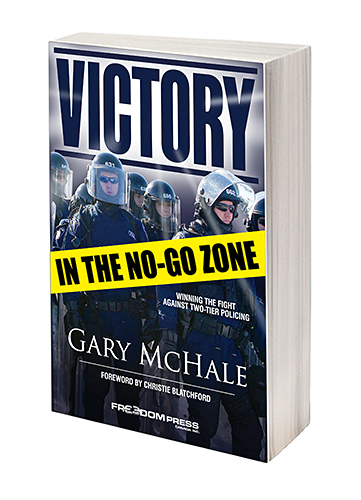
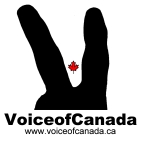

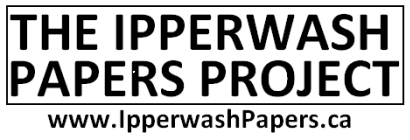
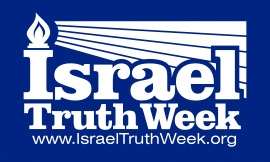

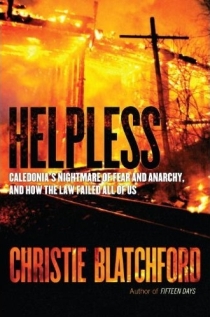

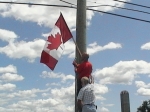






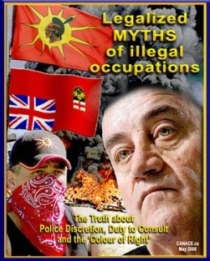
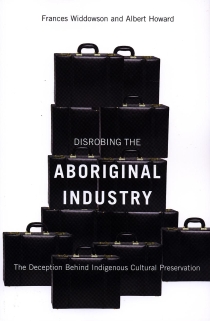
Pingback: Caledonia Players | Caledonia Victims Project
Pingback: The UN, and Islamic terrorists groups work with organized crime in Caledonia
Pingback: WHY AM I NOT SURPRISED? « Canadian Kuffars
Pingback: CALEDONIA CANADA, HOME OF THE RADICAL LEFT-CRIMINAL ABORIGINAL-FUNDAMUSLIM NEXUS……. |
I’m getting sick of this bullsh*t… Send in the Military, already.
Pingback: Caledonia: Was the Conservative Party of Canada friend or foe to victims? | Conservatives Against Racism
Pingback: Caledonia: Was the Conservative Party of Canada friend or foe to victims? | Caledonia Victims Project
Pingback: Mohawk Warriors occupy High Park in Toronto « JeffParkinson.ca
Pingback: Stop “Caledonia in Toronto”: Information rally in High Park on May 28, 2011 — mooseandsquirrel.ca
Pingback: JOINT NEWS RELEASE re High Park, Toronto protest Saturday, May 28 | Caledonia Victims Project
Pingback: History of the Mohawk Warrior flag: symbol of organized crime and supremacist ideology | Caledonia Victims Project